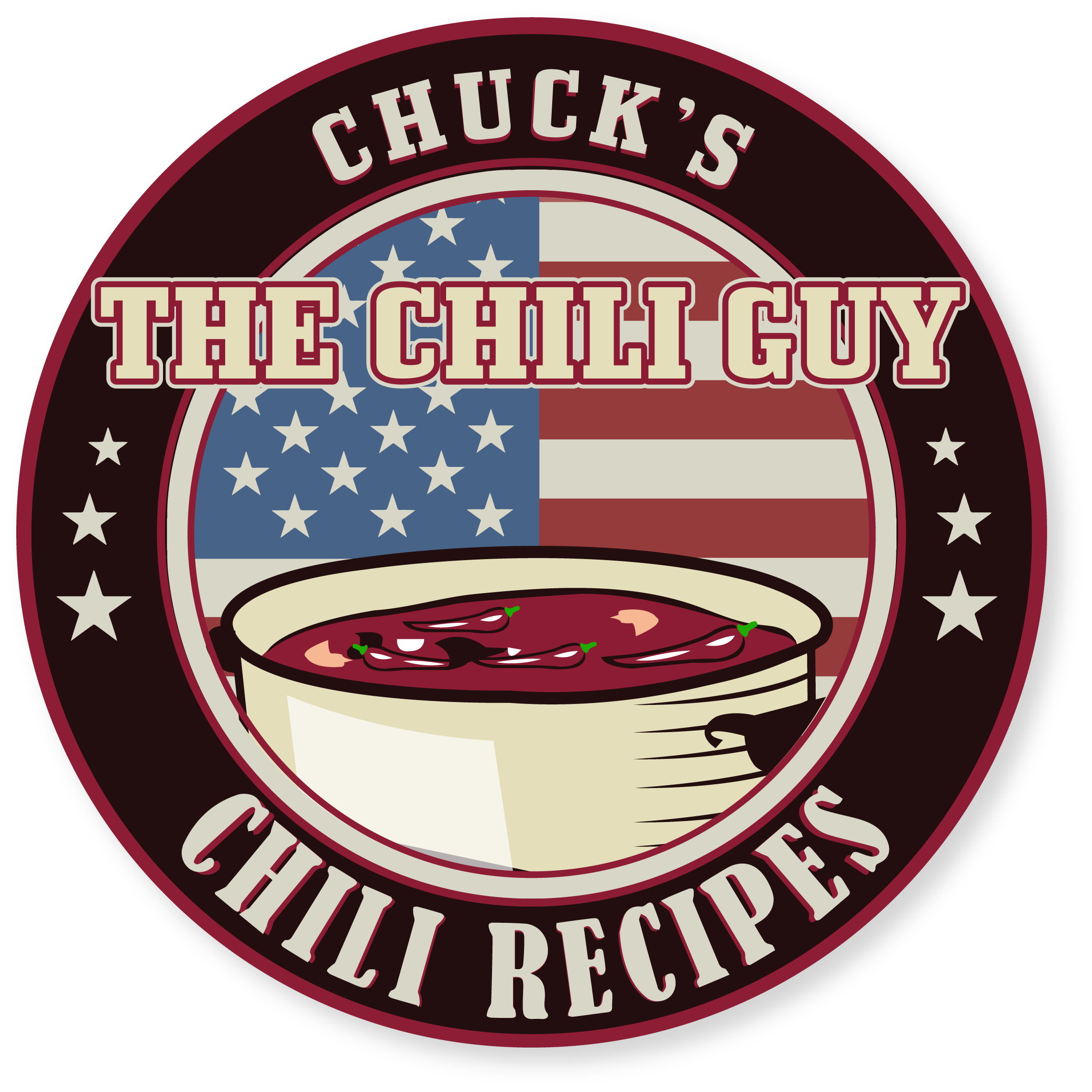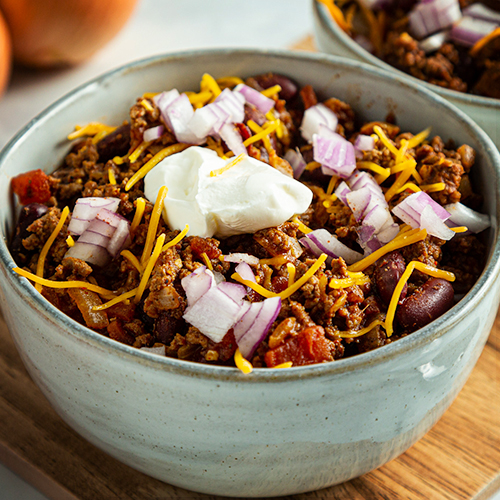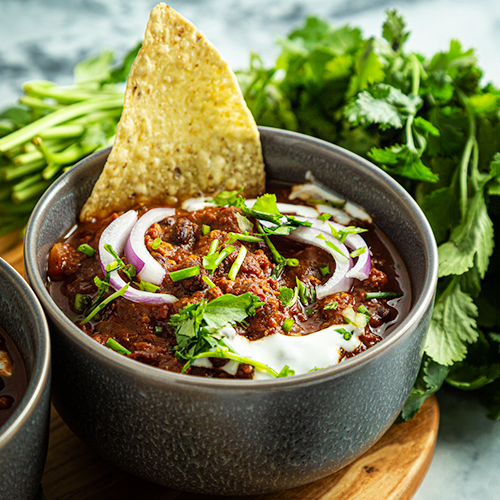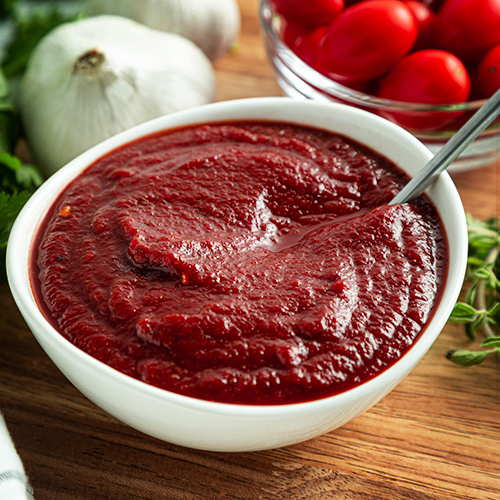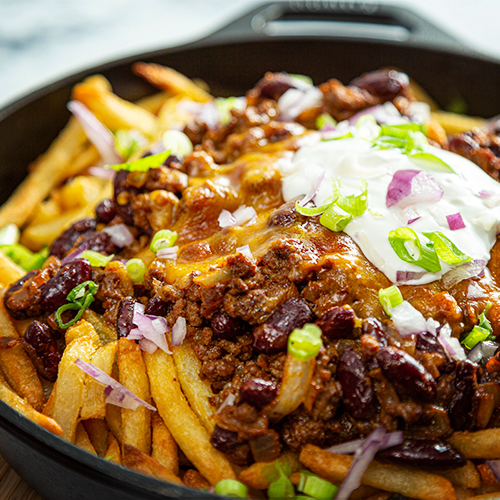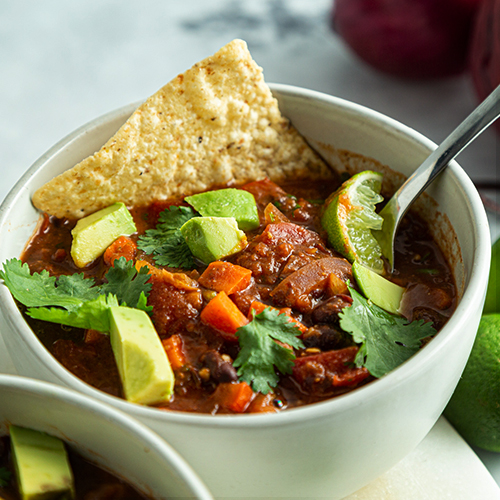22 Popular Foods Eaten By Cowboys and Pioneers in the Wild West
Being a cowboy in the Wild West was no doubt a hungry job! Cowboys spent long, hot days herding cattle, repairing fences and buildings, and even helping to establish frontier towns. However, cowboys were not the only ones hard at work during the 1800s. Pioneers embarked on grueling, perilous journeys to settle uncharted lands. These quests were fueled by hope, ambition, resourcefulness, and beans — lots of beans! But what kind of beans did pioneers eat? What did cowboys eat on the trail? Did cowboys eat rice? This Wild West food guide from Chuck’s Chili Recipes can answer these questions and more:

What Did Cowboys Eat?
Popular foods in the 1880s and iconic parts of the cuisine of the Wild West included beans, fresh beef, dried meat, dried fruits, sourdough biscuits, bacon, potatoes, eggs, and salt pork. Beans were one of the most important foods of the Wild West.
What Kind of Beans Did Cowboys Eat?
Pinto beans were the bean of choice for cowboys and pioneers. Beans were ideal for travel and work on the frontier because they are highly portable, nutrient-dense, and lightweight.
What Meat Did Cowboys Eat?
Fresh beef was readily available and was often used in recipes such as “bowl of red,” or chili. To feed many cowboys quickly and efficiently, chuck wagon cooks would simmer cheap, chewy cuts of beef with hot chilies until it became tender and decadent with its own rich, flavorful gravy. How do you make a “bowl of red”? Just look around this site to check out my “bowl of red” recipes (or chili recipes)!
What Is a Chuck Wagon?
According to the National Cowboy & Western Heritage Museum, a chuck wagon is a covered wagon that serves as storage and transportation for food and cooking equipment. These wagons accompanied cowboys on long cattle drives.
How Did People Cook in the Wild West?
Dutch ovens were a priceless staple for chuck wagon cooks, often used over an open fire. How was food preserved in the 1800s on the frontier? Drying, smoking, and salting were vital for the longevity of meats and fruits. Compared to the dried meat of today, Wild West jerky was much drier, saltier, and more brittle. Pioneers and cowboys also adopted pemmican from the indigenous people. What is pemmican? Pemmican is a mixture of tallow (rendered beef fat), dried meat, and berries. It’s calorie-rich and portable with excellent shelf stability. In fact, many consider it to be the ultimate survival food!
To supplement beef, cowboys occasionally ate wild game such as fish, bison, and skunk. Salt pork was also enjoyed by cowboys. How do you make salt pork? In the Wild West, pork belly was preserved by either laying it out with a coating of salt until it dried or filling a barrel to the brim with meat and soaking it in pickle brine. Bacon grease was also crucial for cowboy cuisine. It was used to add flavor to grains, such as with corn dodgers and “hound’s ears.” What are corn dodgers, and how were they made? Corn dodgers were made with a cornmeal and salt mix fried in salt pork grease in a cast iron skillet over an open fire.
What Did Cowboys Eat for Breakfast?
Was there coffee in the Wild West? Of course! A common breakfast in the Wild West involved coffee first and foremost. Frontier life was unrelenting, with early mornings and demanding days. What kind of coffee did cowboys drink? Coffee was often brewed from roasted Arbuckle beans, which were created by John Arbuckle in 1868. During the roasting process, the quintessential Wild West coffee beans were coated in sugar, eggs, and Irish moss. This imbued them with a distinctive flavor, making it easier for cowboys to enjoy a rich cup of coffee around the fire without needing sweetener. Cowboy breakfast foods also included beans, eggs, bacon, and biscuits slathered with lard and gravy.
22 Popular Foods Eaten by Cowboys and Pioneers in the Wild West
| Food | Description |
| Coffee | Coffee was often made with roasted Arbuckle beans. Arbuckle’s was the original coffee of the Wild West, created by John Arbuckle in 1868. The roasting process involved coating the beans in sugar, Irish moss, and eggs. This imbued the coffee with its own flavor, making it easier for cowboys and pioneers to make coffee on the frontier without needing sweetener or flavoring. |
| Coffee substitutes | If coffee was scarce, pioneers would grind up foraged ingredients such as acorns, parched corn, okra seeds, and chicory roots to make alternatives. They also cooked and mashed sweet potatoes, formed them into patties with rye flour, and dried them in a Dutch oven. After the mix hardened, it was ground into powder and steeped in water. |
| “Bowl of red” or chili | To feed many cowboys at once, chuck wagon cooks would simmer tough, cheap cuts of beef with hot chilies until the meat became tender and rich with its own thick, spicy gravy. |
| Chuck wagon beans | Beans made up the bulk of a cowboy’s protein intake. Pinto beans seasoned with chili peppers were a popular choice. Lightweight dried beans were ideal because they were highly portable and could soak all day, making prep easy come nightfall. |
| Sourdough biscuits | Small, soft biscuits made on the go in a Dutch oven over hot coals, made with milk, sugar, flour, years, and bacon drippings or other fat. Cowboys loved them served “sopping” with gravy or on top of pies. |
| Cowboy biscuits (or hardtack) | Flour, water, and salt biscuits that became hard and dry when baked for a long time at a low temperature. They were used to sop up coffee or crumbled into stews. |
| Dried meat | Sun, smoke, wind, and salt were all methods used to create meat jerky. Compared to today’s jerky, it was much drier, more brittle, and saltier. |
| Salt pork | Pork belly was preserved either by laying it out with a coating of salt until it dried or layering salt and pork in a barrel to the brim and soaking it in pickle brine. |
| Eggs | Eggs occasionally accompanied breakfast, but because they were often shipped west over considerable distances, they would go bad. Westerners called an old, rotten egg a “souvenir.” |
| “Overland trout” (bacon) | Bacon and grease from pigs were a crucial part of cowboy cuisine. |
| “Pooch” | Pooch was slang for a mix of canned tomatoes, sugar, and cold bread crumbs or biscuit cubes. |
| “Hound’s ears” | Thin sourdough batter was dropped into hot grease in the shape of a dog’s ear and fried. |
| “Whirlup sauce” | Sauce made from water, sugar, dried fruit, and any available spices. Pouring it over “hound’s ears” until damp was a beloved dessert. |
| Dried fruit | Dried apples, raisins, apricots, berries, and prunes were the most abundant. They were eaten plain or reconstituted with water and mixed into steamed cobblers, puddings, or biscuits. |
| Corn dodgers | A cornmeal and salt mix was fried in salt pork grease for a delicious treat. |
| Hard cheese | Cheese dried until hard and dipped in paraffin wax was a popular ration because it could last for months without spoiling. It was often added to chili or cooked inside biscuits. |
| Pemmican | A mixture of tallow, dried meat, and sometimes dried berries, it was introduced to cowboys and pioneers by indigenous people. |
| Wild game | While fresh beef was plentiful, cowboys also hunted and fished. |
| Roast skunk | One old pioneer book provided instructions for roast skunk with a critical note on removing the scent glands before cooking. |
| Calf’s foot jelly | Calf feet (hooves removed) were mixed with eggs, sugar, lemon, and spices and eaten as a popular dessert. |
| Sheep sorrel pie | Creative lemon pie substitute. Pioneers would forage for sheep sorrel, an herb that imbued pies with a lemony taste. |
| Calf fries | Otherwise known as roasted calves’ testicles. Cowboys considered them to be an elixir of vitality. |
Use the following embed code to post this infographic on your website:
This page was last updated by Chuck Miller
